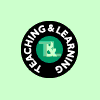|
|
|
|
 |

 |
|
| 4.
COURSE DESIGN The course curriculum is
well-researched, with aims and learning outcomes appropriate to the level of study;
content, teaching and learning and assessment methods facilitate the achievement of the
aims and learning outcomes; there is an identified process of development and evaluation
of courses |
Elements of the CRITERION
- For each course, there is a publicly accessible description of the aims and learning
outcomes, credit rating and/or notional hours of learning, target group, style of learning
and teaching, features of the learning environment and resources, and pattern of
assessment.
- The course is designed with national needs as well as the needs of prospective learners
and employers in mind.
- The list of courses offered by an educational provider is limited to a number that
allows for quality investment in course design and development in the context of budgetary
limitations. (Quality is defined by the criteria in this document).
- The outcomes of the course are in line with the demands of appropriate bodies,
nationally and internationally, as well as human resource development needs.
- The course is developed with the needs, knowledge and experience of the target learners
in mind.
- Content and assessment strategies facilitate the achievement of the learning outcomes.
- Various forms of learner support are built into the design of the course and develop
sufficiently the appropriate skills of the learner.
- There is a stated language policy for the course which is based on the national language
policy, language profiles of learners, career context and curriculum. The policy is
implemented in course materials, assessment and learner support.
- The choice of media and type of technology is integrated into the curriculum design, and
is justified in the light of the aims of the course, the required learning outcomes, and
learner needs and contexts.
- Active teaching and learning methods help learners achieve the outcomes, and encourage
critical thinking and independent learning.
- Teaching and learning strategies are varied and cater for different learning needs,
styles and contexts.
- Assessment methods provide for a range of contexts and give comprehensive feedback to
the learner.
- The assessment strategy includes effective moderation procedures.
- Entry level skills, knowledge and experience are made explicit for each course.
- The educational provider makes relevant competence requirements of authors, consultants,
and others that are brought into the course design and development process.
- The educational provider gives authors, consultants, and others involved in the course
design and development process necessary guidance and training regarding aspects of
distance education in order to assure quality in their work.
- An appropriate infrastructure exists within the educational provider to administer the
range of elements of the course efficiently.
- The quality of the design and presentation of the course, as well as its
cost-effectiveness, is evaluated in terms of the numbers of learners successfully
completing the course.
|
|
SA Criteria Contents • Teaching and Learning • Return
Home |